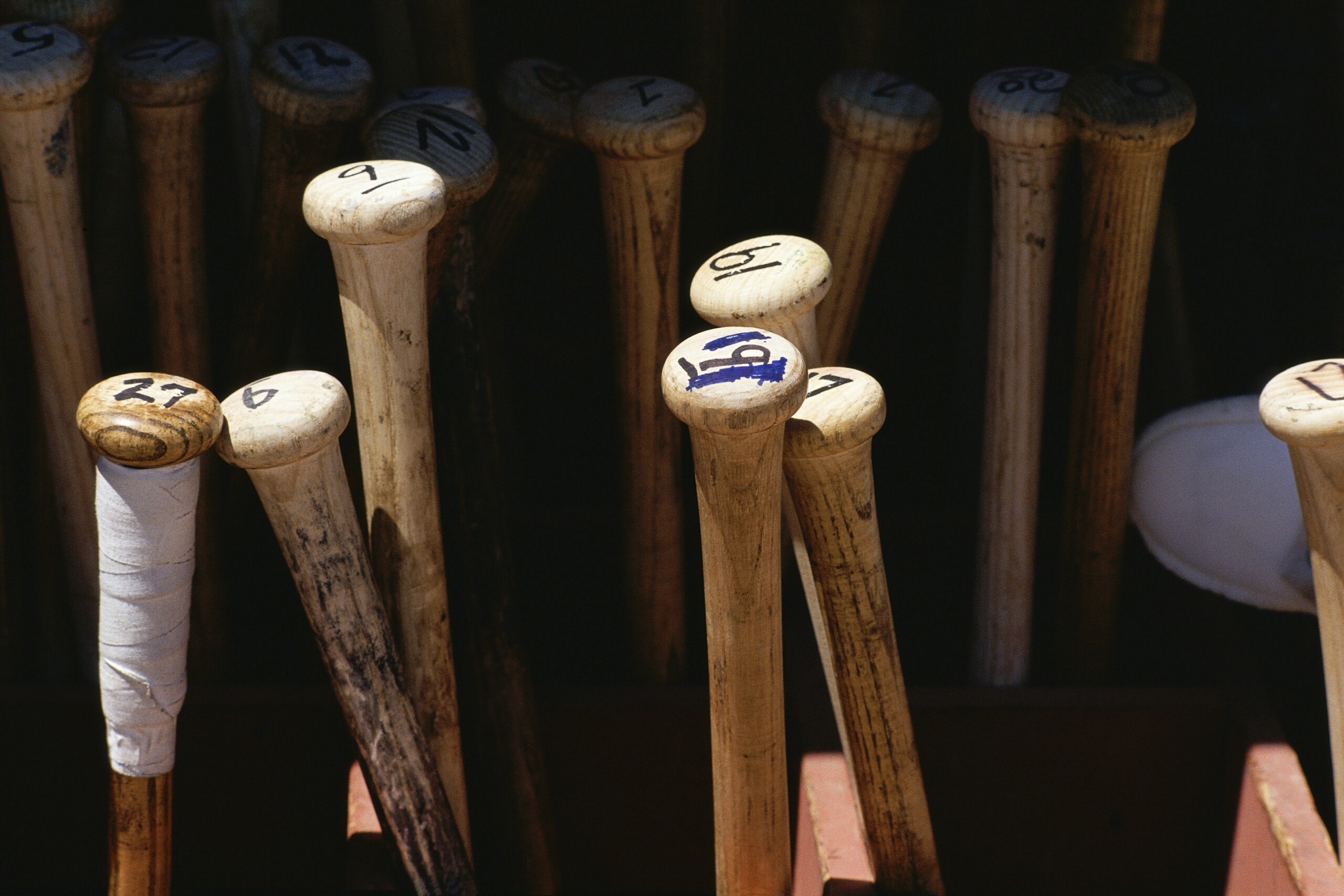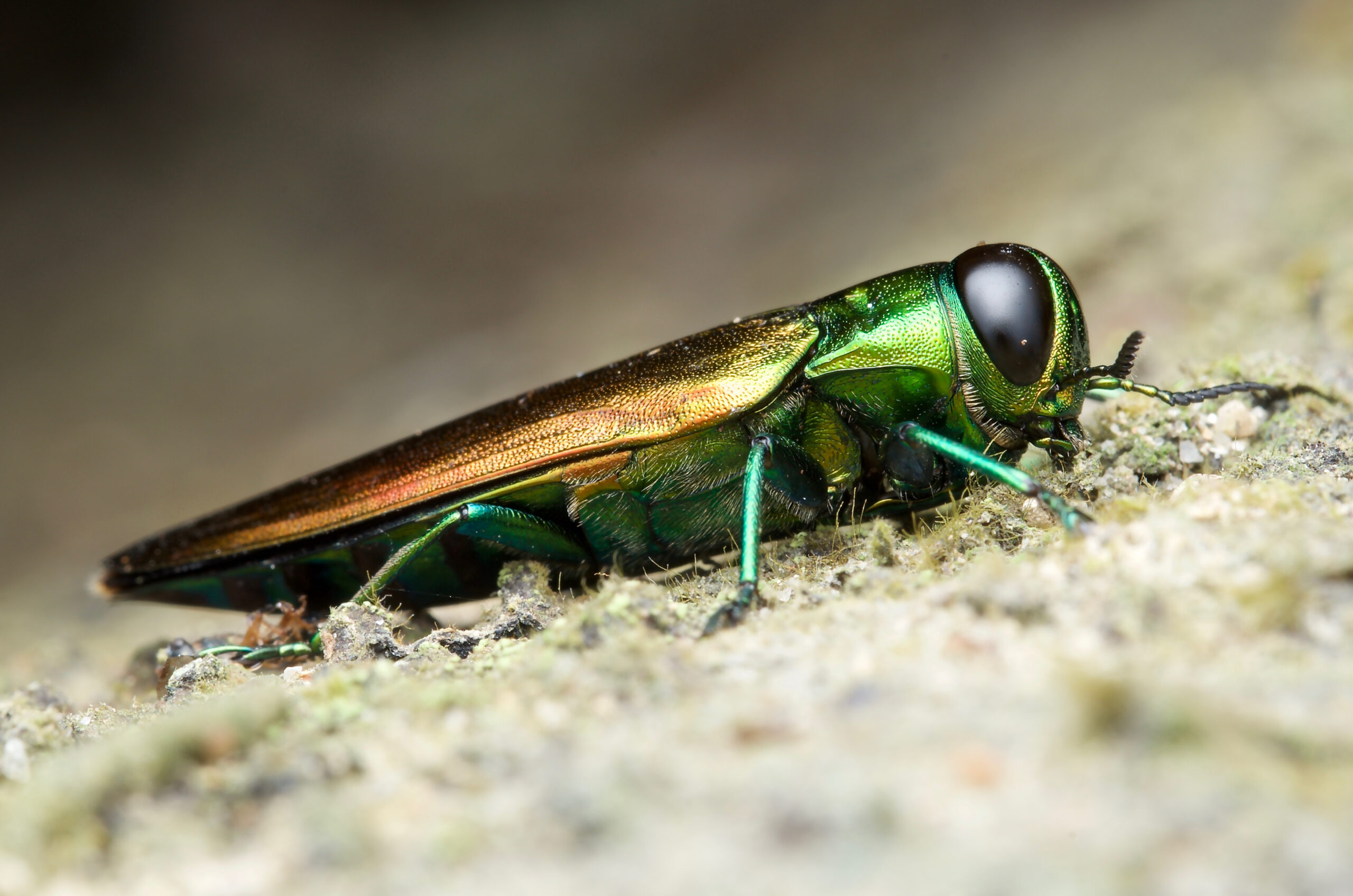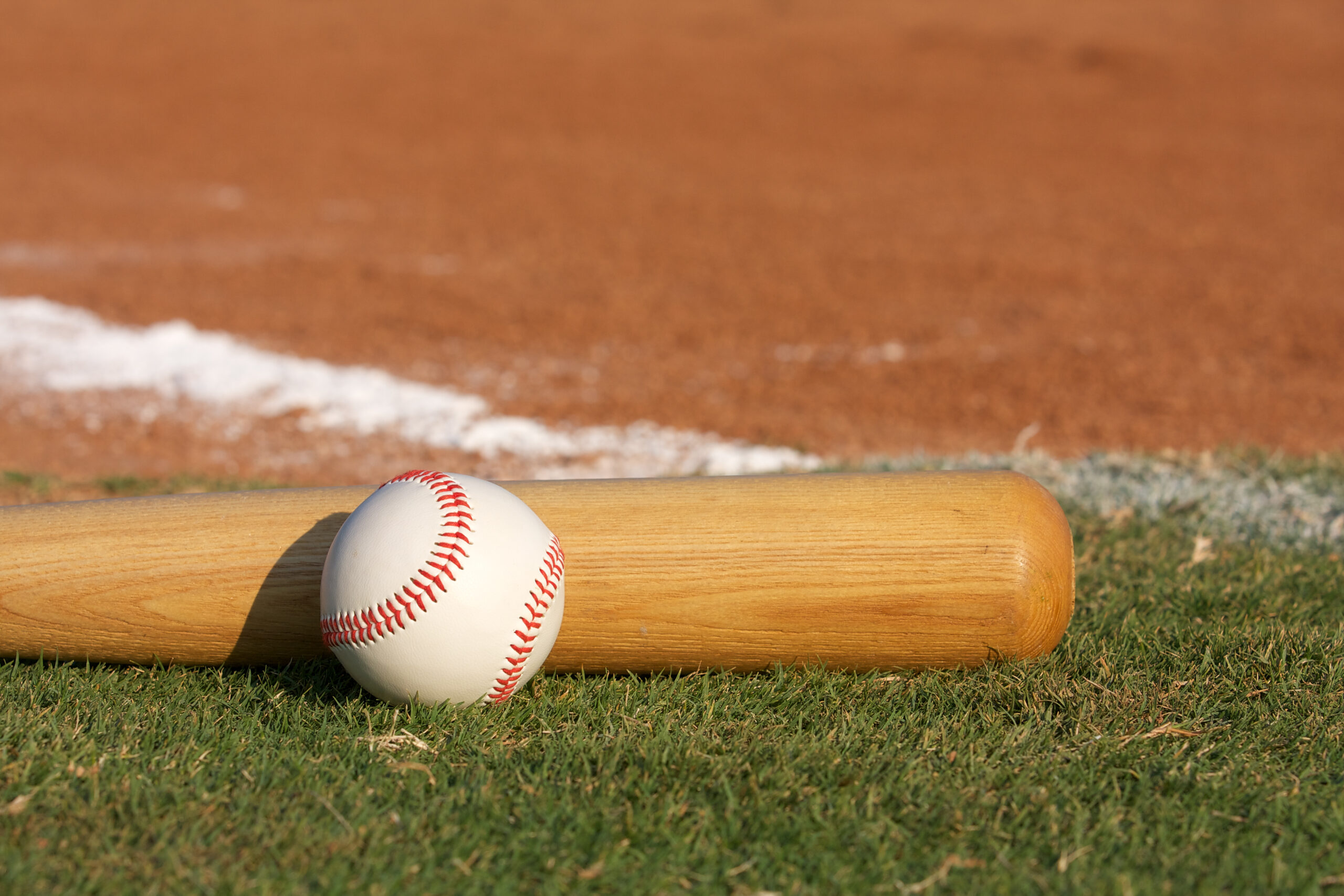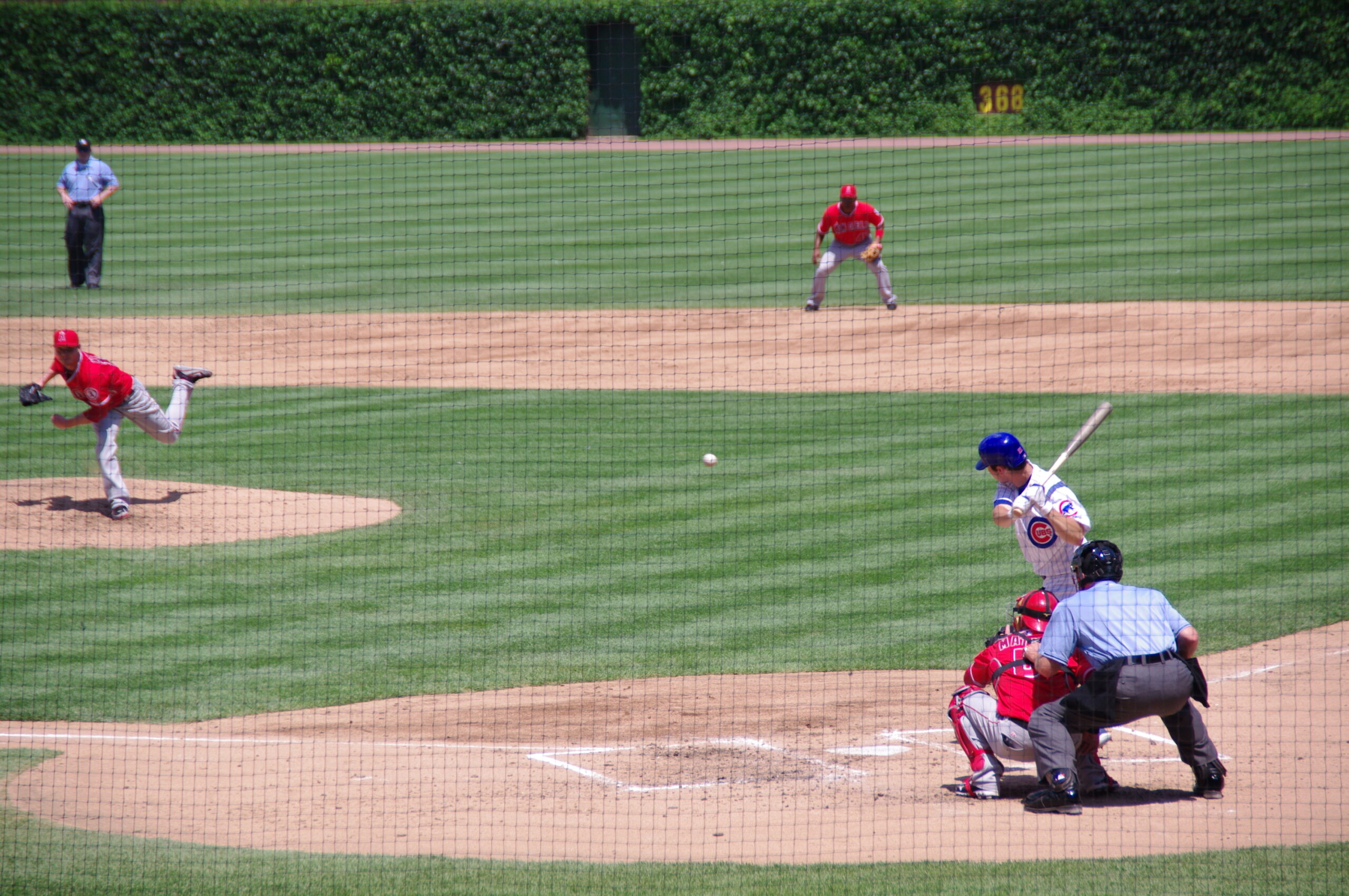Emerald Ash Borers Are a Swing & a Miss – Literally
Emerald Ash Borers Are a Swing & a Miss – Literally
America’s past time returns to diamonds and television screens across the country this Thursday. That’s right: baseball season is here! Each of the five senses feels the effects with the live viewing of this sport: the smell of the grass and sunscreen, the sun in your eyes, the buttery smoothness of the mitt on your hand, the taste of the ballpark food, and the sound of the bat connecting with the ball. But older fans of Major League Baseball may have noticed that the crack of the wood bat has slightly changed over the past couple of decades. This is due to the use of ash bats slowly dwindling and maple bats becoming the new standard. But it wasn’t completely up to the players to decide; some of the largest bat companies in the U.S. were forced to lessen their production of ash bats all because of a hungry invasive pest. The emerald ash borer may look like a pretty green beetle, but its destructive diet has changed the standards of MLB equipment for generations to come.
The Legacy of the Ash Bat

Since the establishment of MLB in the 19th century, ash has been the wood of choice for the players’ bats. Some of this sport’s greatest hitters (Babe Ruth, Ted Williams, Derek Jeter) achieved their impressive feats with ash bats, which was the standard until maple bats rose to fame in recent decades. Most professional players have switched to maple in the 21st century, which resulted in the 2022 postseason being the first in generations to not feature any players who were loyal to ash bats. Ash has many benefits for a batter, as these bats are soft, flexible, and porous compared to other wood bats. This results in a quicker swing and better control of the ball’s direction. The decreasing popularity of the ash bat is not a coincidence, as 2002 was a defining year for baseball in the worst way: the emerald ash borer began wreaking havoc in American ash forests.
Hillerich & Bradsby is the manufacturing company behind the famous Louisville Slugger bats, as produced by Wilson. This company used to produce about 800,000 bats per year, sourcing the ash wood from their select forests between Pennsylvania and New York. They found that a better quality of wood correlated with a better “pop” and less instances of the bat shattering. Now, thanks to that tiny green insect, they only make about 350,000 ash bats per year, and these are reportedly not the same high-quality bats that they used to be. If the emerald ash borer was not a factor, experts believe that maple would still be the bat of choice for most MLB players, but ash would be a more common bat than it is currently. When this insect was discovered in the U.S., everyone in the bat manufacturing business thought it would be contained and not pose a threat to their products. But the past twenty-one years have not been kind to ash trees, and preventing these ravenous beetles from wiping ash bats off the map is essential now more than ever.
Enter: Emerald Ash Borers

In 2002, the emerald ash borer was discovered in Michigan, marking its first appearance in the United States. Since this pest is native to Asia, it is thought to have travelled overseas on packing material in a shipping vessel. It is now considered to be the most destructive insect in America, though there are certainly some hungry pests that could give it a run for its nonexistent money. Adults of the species are about half an inch long with metallic green wings. The emerald ash borer will lay its eggs under the bark of an ash tree, and once the larvae emerge from their casings, the insect has entered its most dangerous life phase. Larvae eat the tissues of trees, carving galleries underneath the bark and cutting off vital nutrients from reaching the rest of the tree. Though they prefer ash trees that already suffer from drought, emerald ash borer larvae can chew the healthiest tree into a gray and empty pulp. Once they develop into adults, the insects will fly from the tree to a new food source nearby. The adults usually stick with munching on leaves, but the damage that they do in their larval stage will likely kill the ash tree in one to three years.
In the past two decades, it is estimated that emerald ash borers have killed over 50 million ash trees in Northern America. This is why the species is so detrimental to the production of ash bats; their frequent reproductive rates and love for white ash trees has triumphed over the previously-efficient manufacturing of ash bats. One factor that has sped up the process is warmth, as is the case with most insects. With warmer temperatures, emerald ash borers develop quicker and are more likely to survive. Since the adults won’t fly miles away from their home, the fact that these insects spread so much is because they are moved by the firewood and logs they invaded. In fact, one of the most obvious signs of an emerald ash borer infestation is the influx of woodpeckers. These birds love the larvae and will furiously peck away at the bark to get to the tasty grubs.
There are two main ways that the manufacturers and foresters have worked against emerald ash borers. One is by quarantining the wood that the insects have invaded. This is when the affected trees are blocked off and will not move from their home until they are treated. Wood quarantining will at least keep the damage contained to a certain sector, but it still means that some trees have to be infested. Speaking of wood making a sacrifice, another way that professionals are combatting emerald ash borers is by distracting them with bait. This works by cutting a ring into an ash tree and leaving it alone, as the emerald ash borers prefer stressed trees and will go there instead of the healthy ash trees nearby. It is essential to find ways to fight emerald ash borers, as it is possible for the species to wipe out all ash trees in America. Since ash trees are vital to the ecosystem, as is any tree, controlling the emerald ash borer population is in the best interest of everyone, regardless of their interest in baseball.
Bugs vs. Bats

As for the future of ash baseball bats, it is still somewhat up in the air. Today, ash bats are sold by the major manufacturers, but the great quality from the twentieth-century bats is not always guaranteed. Some companies have even downgraded their ash bat marketing to simply consist of costume props and self-defense tools, rather than a bat worthy of baseball’s greatest hitters. The emerald ash borer population would need to be eliminated from the ash forests in order for ash bats to make a true comeback, but there may already be a natural solution in place to achieve this goal. Parasitic wasps are the dominant predator of these insects, and the wasps are gradually being introduced to ash forests in hopes of ending the reign of emerald ash borers.
MLB is the predominant industry that uses ash wood, but it is unlikely that wood bats will disappear from the equipment lockers of the sport. Since ash bats were already dethroned by maple bats as the popular choice, wood bats will continue to be a part of MLB’s legacy. And who knows? The ash tree population will take generations to recover, but we may eventually see ash bats rise in popularity again one day. This solely depends on the control of emerald ash borers, as well as the prevention of other wood-boring pests that favor ash trees, such as native ash borers and bark beetles.
For now, maple bats are still an excellent choice for strong hitters. These bats are dense, sturdy, and virtually unbreakable. The heavier structure helps with the launch angle and velocity of each hit, which is valued by this era of heavy hitters in baseball. In fact, it’s estimated that about 87% of MLB players use maple bats today. Some of the most famous recent sluggers, like Barry Bonds and Aaron Judge, have broken records with maple bats. However, no wood is safe from the world of invasive pests. Maple wood is targeted by wood-borers as well, especially by the Asian longhorn beetle. Thankfully, this beetle is much easier to control and is not at risk of eliminating maple trees from our forests.
As you celebrate the return of baseball this week, take a closer look at the bats being wielded by these experienced athletes. The wood could be maple or the lesser-used birch. Or, possibly, we will see ash slowly make its triumphant return, one baseball bat at a time.
Pests Strike Out Against Green Pest Services

While you may not have a grove of ash trees in your backyard (or maybe you do; we don’t judge), there are still plenty of pests that would love the chance to invade your yard and home. Invasive garden pests, like grasshoppers and beetles, can stunt the growth of any plant they feed on for a few days. Others, like ants and roaches, are attracted to crumbs and food that is not completely sealed. When you receive pest control services from Green, you can expect the best of the best. Our experienced technicians thoroughly inspect the property for any signs of pests and will seal small entry points as part of our preventative services. Since all of our treatments are eco-friendly, you won’t have to worry about dangerous chemicals in the areas where your family and pets like to relax. Contact us to learn more about our professional pest control services and how our technicians will step up to the plate against your pest problems!
Citations
About the emerald ash borer. (n.d.). Emerald Ash Borer Network. Retrieved February 22, 2023, from https://www.emeraldashborer.info/about-eab
Daley, J. (2016, August 5). An insect could make ash baseball bats a thing of the past. Smithsonian Magazine. Available at https://www.smithsonianmag.com/smart-news/insect-making-ash-bats-part-baseballs-past-180960027/ (Accessed on February 22, 2023).
Garrity, T. (2022, October 20). How an invasive insect destroyed the Louisville Slugger forest. InsideHook. Available at https://www.insidehook.com/daily_brief/sports/invasive-insect-louisville-slugger-ash-bats (Accessed on February 22, 2023).
Mann, B. (2016, August 3). A beetle may soon strike out baseball’s famous ash bats. NPR. Available at https://www.npr.org/2016/08/03/488432537/a-beetle-may-soon-strike-out-baseballs-famous-ash-bats (Accessed on February 22, 2023).
Patterson, B. (2016, April 5). Baseball bats threatened by invasive beetle. Scientific American. Available at https://www.scientificamerican.com/article/baseball-bats-threatened-by-invasive-beetle/ (Accessed on February 22, 2023).
Schonbrun, Z. (2022, October 20). Baseball history is no longer written with ash bats. New York Times. Available at https://www.nytimes.com/2022/10/20/sports/baseball/ash-bats-baseball.html (Accessed on February 22, 2023).
8 Creative Ways to Have a Pest-Free Fourth of July
8 Creative Ways to Have a Pest-Free Fourth of July 8 Creative Ways to Have a Pest-Free Fourth of July Summary: The Fourth [...]
A Simple Guide to Preventing Stinging Pests
A Simple Guide to Preventing Stinging Pests A Simple Guide to Preventing Stinging Pests Summary: Stinging insects are more active in warm weather, [...]
These 10 Natural Mosquito Repellents Can Actually Help
These 10 Natural Mosquito Repellents Can Actually Help These 10 Natural Mosquito Repellents Can Actually Help Summary: Natural mosquito repellents are easier to [...]
How to Get Rid of Carpet Beetles
How to Get Rid of Carpet Beetles How to Get Rid of Carpet Beetles Summary: Carpet beetles are sneaky pests that don’t usually [...]
How Do Roaches Affect Asthma and Allergies?
How Do Roaches Affect Asthma and Allergies? How Do Roaches Affect Asthma and Allergies? Summary: It’s no secret that pests impact human health, [...]
These 5 Carnivorous Pests Might Surprise You!
These 5 Carnivorous Pests Might Surprise You! These 5 Carnivorous Pests Might Surprise You! Summary: There are many eco-friendly ways to prevent pests, [...]

